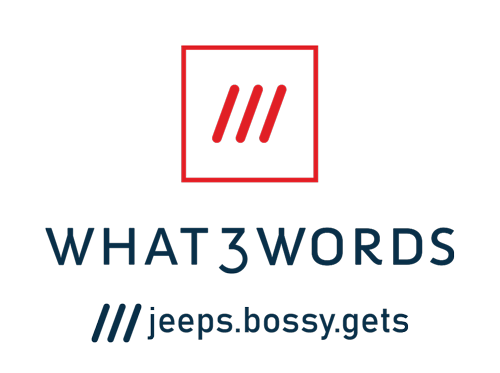If you’ve not heard of what3words yet, you will soon. The London-based tech company has been making waves in recent weeks, with a raft of stories hailing it as a tech innovation that’s saving lives. Last week, a group of friends who got lost in rural County Durham were urged to download the what3words app by emergency services, who were then able to locate them almost immediately. Earlier this month, four friends got stranded when their boat ran out of battery on the River Tees. Again, the emergency services asked them to download the app and they were quickly found.
Simply put, I think what3words is the most exciting tech company in the UK. The market seems to agree too; the what3words app is currently number 1 in both the App Store and Google Play Store. So how does it work? I sat down with founder Chris Sheldrick back in June to record a podcast, and ask him exactly that.
3 metres squared
Chris Sheldrick was inspired to create what3words by his experiences working in the music industry. He often found that musicians would get lost a lot, and that it was difficult to get them to exactly the right place. From my own experiences in the music industry, I know this to be true! To make matters worse, if they do manage to find the right place – a venue for example – they might turn up at the front entrance, rather than the back where they need to be to load their gear in. He would try sending them coordinates, which pinpointed the exact location, but he found that many people would either mis-type the number and end up in the wrong place, or be so confused by the whole thing that it made matters even more complicated.
Chris’ solution was simple, but brilliant. He divided the entire planet up into a grid of squares that are all three metres by three metres. Every square has a unique sequence of three words to identify it. So, for example, as I sit at my desk writing this in my Brixton office, the three words that identify my location are forgot.tribune.vets. Head over to what3words right now and type that in, and you’ll be able to see exactly where I am.
The Victoria Road problem
On my podcast, Chris Sheldrick spoke about the problems his product fixes at great length. I’d recommend you go and listen to the conversation in full, but I’ve summarised the gist of it here. Chris argues that the system of addresses and postcodes that we use to navigate the world around us is not only centuries out of date, it’s poorly planned as well. Let’s say you want to use Citymapper plan your route to your mate’s house on 5 Victoria Road, London. If you don’t know the area they live in, good luck! There are 34 Victoria Roads in the capital alone.
The problems only get worse when you leave the city. Yes, you might know the name of the country road you’re on, but what if it goes on for miles and miles? And good luck navigating to a seemingly random spot off-road. It’s precisely these issues that what3words aims to fix, bringing the way we navigate the world into the digital age.
A better way to tell people where you are
As I outlined at the beginning, what3words has deservedly received a lot of praise for its application as a life saving tool. In fact, in the UK, the emergency services will now routinely recommend you download the app if you tell them that you’re lost or stranded somewhere without a fixed address.
However, the app has more everyday uses as well. Whether you’re trying to find your friends in the park over the Bank Holiday weekend, make sure you’ve got the right entrance to a client’s office, or tell the AA exactly where your car has broken down, what3words has revolutionised the way we navigate the world using technology.
Not only that, but the software is available in 36 languages, so you can use it when you’re abroad, or if you’d simply like to use the app in your mother tongue.
Voice
One of the things I’m most excited about with what3words is its potential with voice. When I spoke to Chris, he mentioned that the software had been designed with voice very much as a priority. When it was in development, Chris and his team ensured that whenever there were strings of words that sounded similar, the two 3 metre square grids they corresponded with were on the opposite side of the world to each other. So for example, you saw above that the square my desk sits in is called forgot.tribune.vets.
Let’s say you were to get that slightly wrong and type, or say, forgot.tribune.vest. You’d end up in Tennessee, just outside Chattanooga. When you’re using a text input, and Chattanooga comes up instead of Brixton, you’ll realise you’ve made a mistake and correct it. The really exciting thing, though, is that if you’re in London, and you read the input incorrectly to a voice-enabled device, actually reading out the sequence for Tennessee, the software will automatically realise your mistake, and send you to Brixton instead. This type of disambiguation is an absolute holy grail for voice development, and it’s a massive credit to the what3words team that they’ve come up with such a sound way to achieve this.
It’s Chris’ vision that one day we’ll all be navigating the world by telling our devices the 3 word location we want to travel to. Sound like it’s a bit far off yet? Well, it’s not. The what3words team have already created an Alexa skill that allows you to book an Uber by quoting two different three word sequences. You can have a look at how that works here.
After you’ve checked that out, click here to listen to my interview with Chris Sheldrick, or search ‘The Voice for Voice’ wherever you get your podcasts. And Chris, if you need any help getting what3words up and running in Welsh, you know where to find me!
Geraint John is the Managing Director of Move Digital, the digital marketing agency for ambitious brands. Geraint is also one of the UK’s leading experts in voice technology, and hosts the UK’s premier voice podcast; The Voice for Voice. Find out more about Move Digital here.



